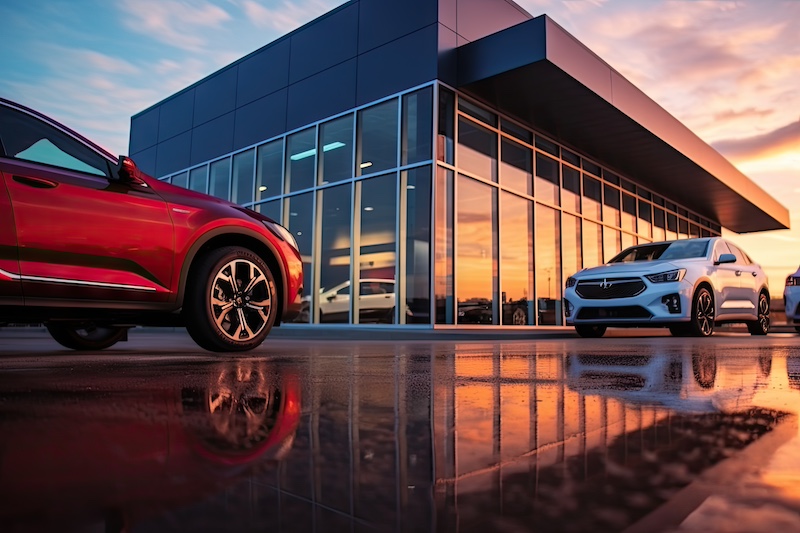The automotive industry is quietly undergoing a generational shift. The number of new vehicle registrations among young buyers aged 18-34 has slowly declined over the past few years. Once a key demographic fueling growth for automakers, younger consumers are now purchasing fewer new cars than ever before. According to S&P Global Mobility, this age group has seen its share of new vehicle registrations drop from 12 percent in Q1 2021 to under 10 percent in 2025. Meanwhile, adults aged 55 and over now account for nearly half of all new registrations, up from 44.8 percent in 2021 and holding the largest share for two years running.
What’s driving this shift? A mix of economic pressures, affordability and changing attitudes toward vehicle ownership.
Rising Costs Put Cars Out of Reach
Affordability has become a major barrier for younger consumers. The rising price of new vehicles has pushed monthly payments beyond the reach of many in the 18-34 age bracket. Over the past four years, average monthly car payments have skyrocketed by 30 percent, with nearly 20 percent of new purchases now requiring payments exceeding $1,000 a month.
Student loan payments, which were paused during the COVID-19 pandemic, have resumed, adding another layer of financial strain. These factors combine to make it increasingly difficult for younger adults to commit to the financial burden of owning a new vehicle, especially when options like public transit, car-sharing, and ride-hailing provide alternative mobility solutions.
Shifting Attitudes Toward Vehicle Ownership
Beyond financial challenges, there’s been a cultural shift in how young people view car ownership. While previous generations often considered owning a car a rite of passage, today’s young adults are less tied to the idea of owning their own vehicle.
Instead, subscription services and car-sharing platforms are gaining popularity. These flexible solutions allow users to access vehicles without the long-term financial commitment of owning, insuring, and maintaining a car. For many, the convenience and cost-effectiveness of these alternatives outweigh the perceived benefits of traditional ownership.
Additionally, sustainability factors into these decisions. Many younger consumers are drawn to greener mobility options, trading private vehicles for shared or public transit to reduce their carbon footprint.
What Do Young Buyers Want?
Interestingly, young adults aren’t turning away from driving entirely. Instead, many are opting for used vehicles. The lower, or lack of, monthly payments and reduced insurance costs make used cars a more appealing option for budget-conscious buyers.
For the 1.1 million that bucked the trend and did register a new vehicle in the last year, smaller and more flexible vehicles seem to be most desirable. Compact utility vehicles are the top choice, accounting for 21 percent of new vehicle volume for younger shoppers. Compact cars follow at 13 percent. Young buyers are also showing a strong interest in electric vehicles, diverging from the hybrids that the market at large seems to prefer. This illustrates that while they’re cost-conscious, younger consumers are still looking for innovative and eco-friendly options.
How Dealerships Can Entice Younger Buyers
The decline in new young car buyers underscores the need for the industry to rethink age-based strategies. Dealerships must adapt their offerings and messaging to better capture a demographic that currently has the highest potential lifetime customer value.
- Offer Affordable Options
One of the most effective ways to engage younger buyers is simply by offering more affordable vehicles. Entry-level models with lower monthly payments and enhanced financing options can make ownership feasible for this audience. Automakers might also explore flexible pricing structures or subscription models to match evolving consumer preferences.
- Prioritize Used Vehicle Inventory
Since young buyers are gravitating toward used vehicles, dealerships can focus on maintaining a robust inventory of certified pre-owned (CPO) options. CPO vehicles provide the reliability and warranty coverage that appeal to budget-minded shoppers without the sticker shock of a new car.
- Leverage Data-Driven Marketing
Producing targeted campaigns that emphasize affordability, sustainability, and flexibility can resonate more deeply with this audience than generalized messages. Furthermore, educating younger buyers on the long-term benefits of vehicle ownership versus alternatives like car-sharing can also help rebuild interest.
- Invest in Sustainability Messaging
Young buyers care about the environment, so showcasing investments in sustainability can help brands stand apart. Promoting electric and eco-friendly vehicle options along with the company’s environmental initiatives can help establish a deeper connection with potential customers.
- Introduce Flexible Ownership Models
Consider implementing car subscription services or short-term lease programs that align with the desire for flexibility. Younger buyers are increasingly skeptical of long-term financial commitments, and offering non-traditional options can help dealerships win their trust and loyalty.
Related Stories:









